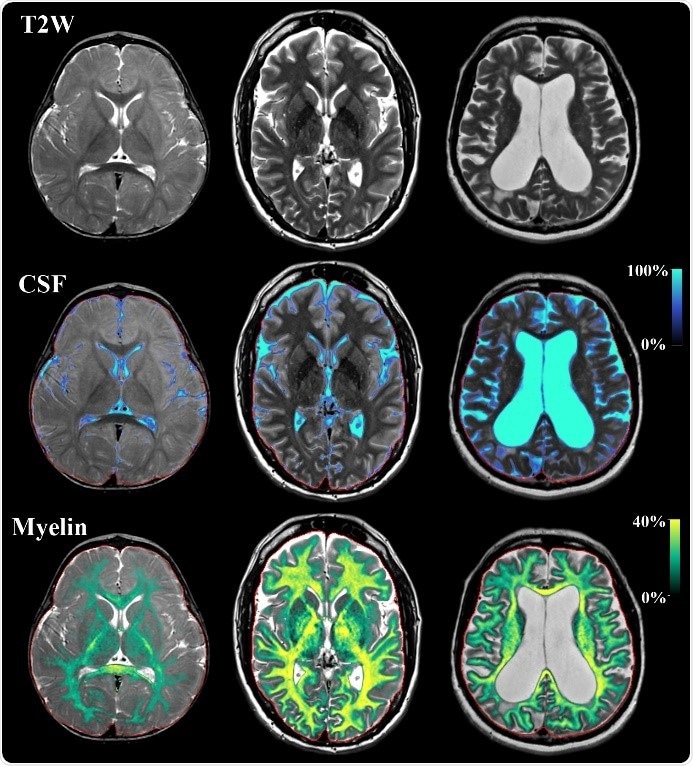It has been a long-standing dream in MRI to move from visualizing tissue contrast differences to directly imaging patient tissue properties. Recent developments within quantitative MRI have provided substantial steps forward in measuring the basic physical properties such as T1 and T2 relaxation times or proton density.
By using these parameters, tissue can further be classified to provide clinically relevant information. One such an example is the detection of myelin in the brain. Myelin rapidly evolves during childhood. However, disease and aging may cause degradation, which impairs the signal transmission in the nerves and may lead to atrophy and brain dysfunction. Accurate in-vivo myelin measurements would therefore be valuable for the diagnosis and follow-up of developmental disorders and neurodegenerative diseases.
In the recent issue of the American Journal of Neuroradiology (AJNR), a study was published called ‘Myelin Detection Using Rapid Quantitative MR Imaging Correlated to Macroscopically Registered Luxol Fast Blue–Stained Brain Specimens’. The article contains a validation study of a myelin model, previously published in Frontiers of Neurology in 2016. The study was performed on 12 intact, human cadavers and shows a high correlation between myelin measurements based on a rapid MRI quantification sequence and the corresponding histologic specimens which were excised at autopsy and stained with Luxol Fast Blue.
The approach has recently become commercially available under the name SyMRI and is manufactured by SyntheticMR in Sweden. The advantage of SyMRI is that the scan time of the sequence is only around 5 minutes and the data not only provides myelin maps, but can also synthesize conventional T1W, T2W and FLAIR images. Postprocessing is performed in seconds. The sequence is available on all major vendor platforms.

Example of SyMRI imaging on three subjects with the age of 1 year, 43 years and 73 years old. Displayed are synthetic T2-weighted images of an axial slice of the brain. On the same slice a tissue segmentation is performed of cerebrospinal fluid (CSF) and of myelin. Using this map, radiologists can follow signal changes, brain volume and the state of myelination. The acquisition takes 5 minutes for full coverage of the brain.